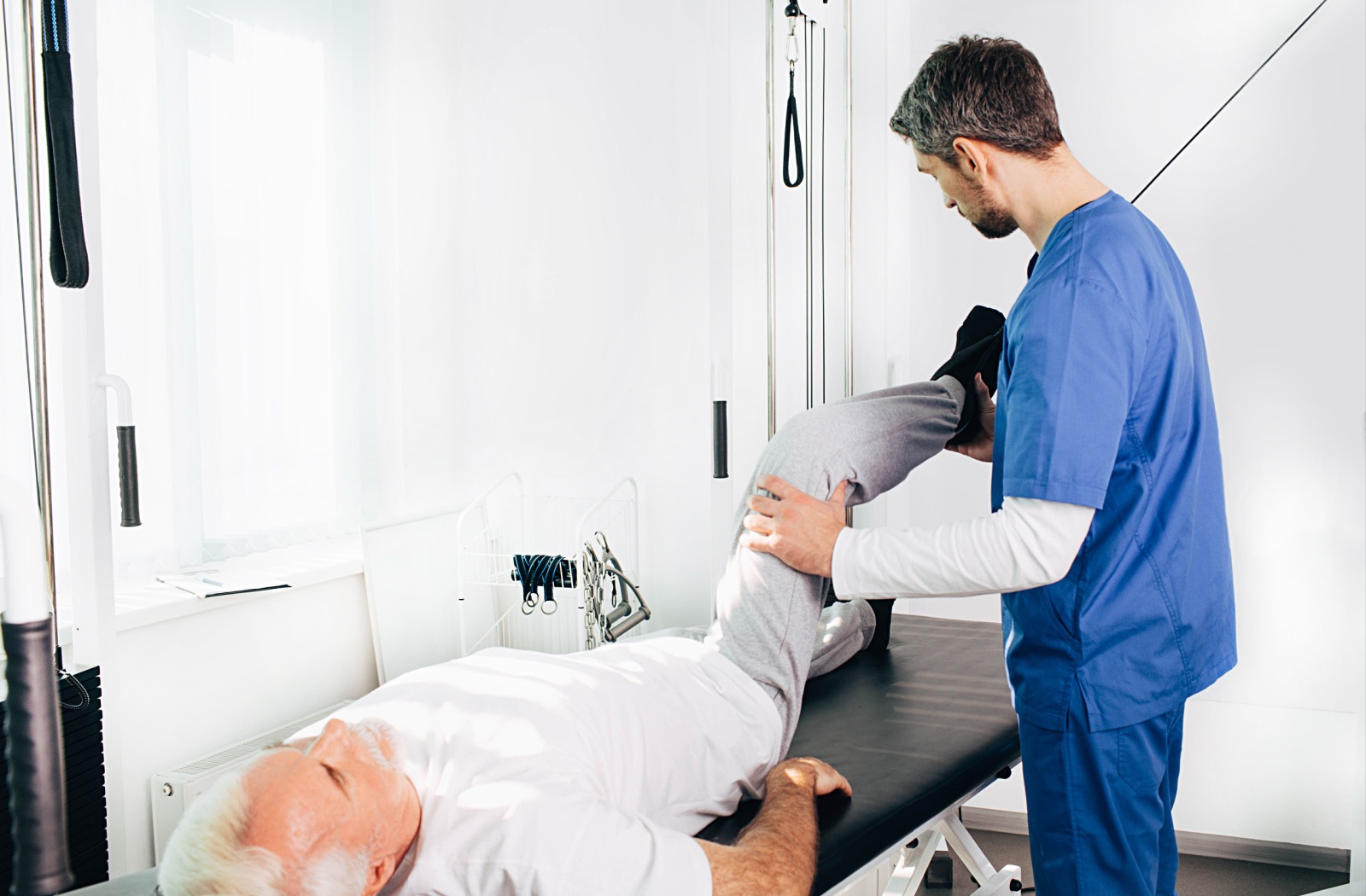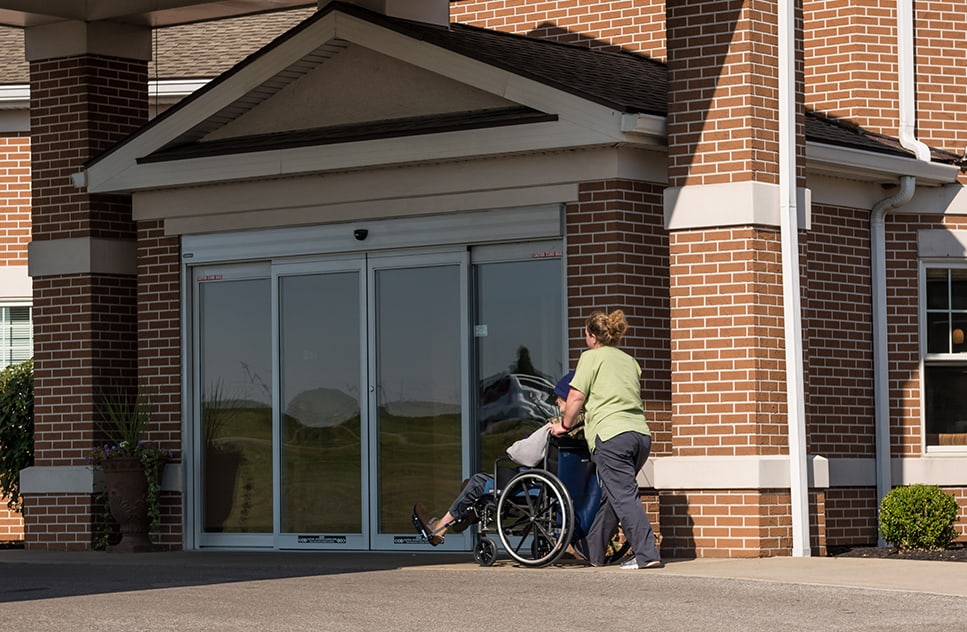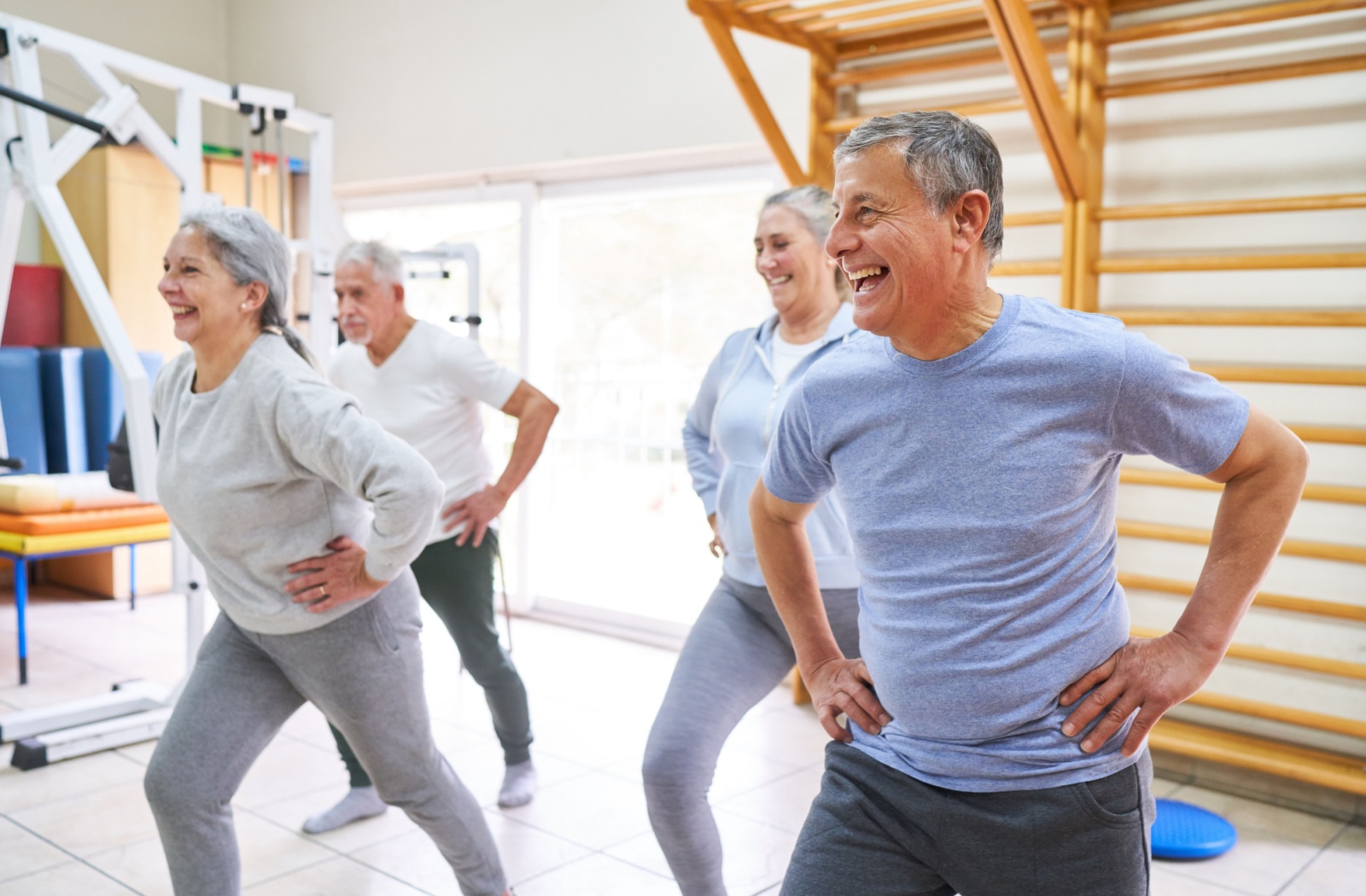Hip bursitis, a common condition among seniors, can cause persistent pain and limited mobility—but targeted movement can make a big difference. Low-impact exercises that focus on stretching and strengthening the hip muscles can reduce pain, ease inflammation, and help prevent future flare-ups. Before beginning any new routine, it’s essential to speak with your doctor or physical therapist to ensure the exercises are right for your specific condition.
At Kingston of Ashland, we provide compassionate rehabilitation and therapy support tailored to individual needs, including care plans for managing chronic joint conditions like bursitis. You can also explore our rehabilitation services to learn more about how we help seniors stay active, independent, and comfortable.
What Is Hip Bursitis?
Hip bursitis occurs when the bursa—a small, fluid-filled sac that cushions the hip joint—becomes inflamed. Seniors are more susceptible to this condition due to natural wear and tear, past injuries, or conditions like arthritis. It typically causes tenderness on the outer hip, stiffness, and pain that worsens with movement, especially after sitting or lying down for long periods.
Though medication or injections may help, incorporating gentle, regular exercise can be one of the most effective long-term strategies to manage and reduce symptoms.
Best Hip Bursitis Exercises for Seniors
Below are some of the safest and most effective exercises seniors can do to ease discomfort from hip bursitis. These exercises focus on increasing flexibility and building strength in the surrounding muscles without aggravating the joint.
Standing Hip Extensions
- Stand behind a sturdy chair or countertop for support.
- Slowly lift one leg straight backward, keeping the knee straight.
- Hold for 3–5 seconds, then lower the leg back down.
- Repeat 10 times on each leg.
Why it helps: Strengthens the glutes and hamstrings, supporting hip joint function.
Side-Lying Leg Lifts
- Lie on your side with your legs stacked.
- Slowly lift your top leg about 12 inches and hold for 2–3 seconds.
- Lower it slowly back down.
- Repeat 10–15 times on each side.
Why it helps: Targets the outer hip muscles (hip abductors) which stabilize the pelvis.
Bridges
- Lie on your back with knees bent and feet flat on the floor.
- Squeeze your glutes and lift your hips toward the ceiling.
- Hold for 3–5 seconds, then lower slowly.
- Repeat 10–15 times.
Why it helps: Strengthens glutes and core muscles, relieving stress from the hip joint.
Seated Marching
- Sit tall in a sturdy chair with feet flat on the ground.
- Slowly lift one knee toward your chest, then lower it back down.
- Alternate legs, marching in place for 30–60 seconds.
Why it helps: Increases circulation and hip mobility without weight-bearing strain.
Clamshells
- Lie on your side with knees bent and feet together.
- Keeping your feet touching, lift the top knee as far as comfortable.
- Hold for 2 seconds, then lower.
- Repeat 10–15 times on each side.
Why it helps: Strengthens the hip abductors and helps stabilize the pelvis.

Gentle Stretches to Reduce Hip Tension
Stretching the muscles around the hip can also reduce inflammation and improve flexibility.
Hip Flexor Stretch
- Stand in a lunge position with one foot forward and the other behind.
- Shift weight forward slightly until you feel a stretch in the front of the hip.
- Hold for 20–30 seconds, then switch legs.
Figure Four Stretch (Seated)
- Sit in a sturdy chair.
- Place your right ankle over your left knee, forming a “4” shape.
- Gently lean forward until you feel a stretch in the outer hip.
- Hold for 20–30 seconds, then switch sides.
IT Band Stretch (Standing)
- Stand tall and cross your right leg behind your left.
- Lean slightly to the left until you feel a stretch along the outer right hip.
- Hold for 20 seconds, then repeat on the other side.
Tips for Exercising Safely with Hip Bursitis
- Warm up first. Start with 5–10 minutes of light walking or movement to get your blood flowing.
- Listen to your body. If an exercise causes sharp or worsening pain, stop immediately.
- Move slowly and with control. Jerky movements can aggravate the joint.
- Stay consistent. Aim to do your exercises 3–5 times per week to see long-term benefits.
- Stay hydrated. Proper hydration helps keep your joints lubricated and muscles relaxed.
When to Seek Help
Although exercise can help manage hip bursitis, it’s important to consult your healthcare provider if:
- Pain worsens or becomes sharp during activity
- You experience swelling, redness, or warmth around the hip
- Symptoms don’t improve with rest and stretching
- You have difficulty walking or bearing weight on the hip
At Kingston of Ashland, our skilled therapists and healthcare professionals can create personalized care plans to help seniors manage conditions like hip bursitis safely and comfortably. Whether you’re looking to recover from a flare-up or strengthen your body to prevent future pain, we’re here to support your journey toward wellness.
Improve Mobility & Comfort at Kingston of Ashland
Hip bursitis doesn’t have to limit your lifestyle. By incorporating gentle, consistent movement into your routine—and working with a care team that understands your unique needs—you can regain strength, ease pain, and support healthy aging.
If you or a loved one needs assistance managing hip bursitis or recovering from a mobility-related condition, contact Kingston of Ashland today. We’re here to help you move through life with greater comfort and confidence.






